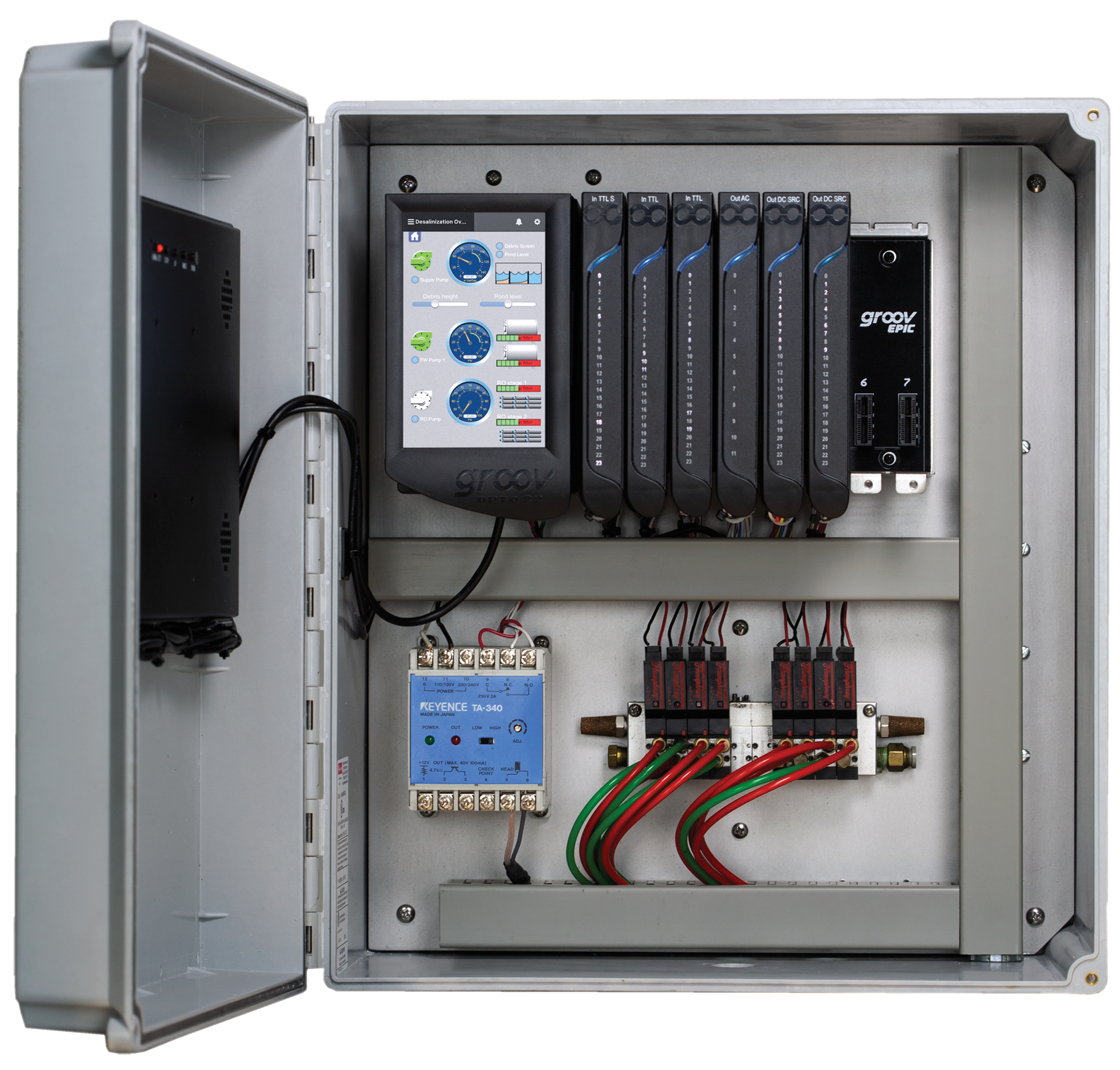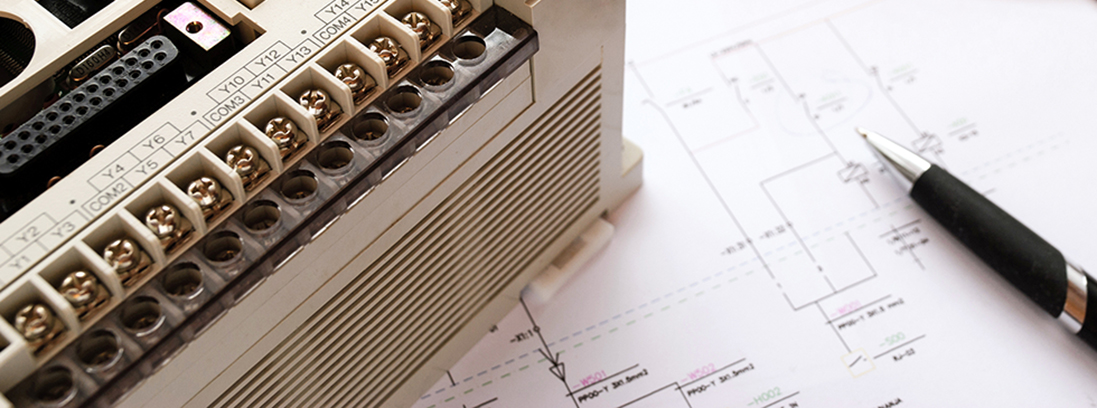PLCs are the brains behind many industrial automation systems large and small. These basics will help you understand what they are and how they are used.
The humble PLC (Programmable Logic Controller) has been around for many decades now and is commonly used for automating many types of machines and processes. When PLCs were initially developed, they were a revolutionary way to supersede massive amounts of hardwired relay and timer logic.
Flashing forward to the present, today’s PLCs include the same basic capabilities as those from the 1970s, but also countless additions and advancements. They are easier to program, partly due to the proliferation of PC-based programming software. They are also easier to monitor, particularly with mobile devices such as smartphones and tablets. A wide range of PLCs is available to cover most any conceivable industrial automation need, but note that automation for safety devices is a special topic outside the scope of this post.
For end users needing to automate a machine or other equipment, a PLC is probably a solid choice, but with so many options it is hard to know where to start. This article will cover some basics, while subsequent articles will explore more specific areas in detail. These PLC basics will help guide you in selecting the right platform to meet your automation requirements.
Interfacing to the Real World
Looking past a lot of specifics, perhaps the defining feature of PLCs is their ability to interact with real world physical field devices, as opposed to most PC or smartphone apps that primarily interact with users through the display interface. Of course, the field devices must be electrically capable of connecting to the PLC.
Here are the most basic functions:
- Inputs: Used to monitor conditions
- Outputs: Used to command equipment
- Logic: The configurable programming that commands outputs as needed based on various input information
- Interface: This is how users interact with the automation system
- Communications: This is how PLCs can communicate with other devices digitally, exchanging much more information that classic hardwired inputs/outputs (I/O)
Inputs come from field sensors of various types, such as a limit switch. Outputs go to field devices to move and change equipment configurations, such as opening or closing a valve. Signals can be the on/off discrete type, while more advanced automation is possible with continuously variable analog I/O.
Logic must be developed by the end user to achieve the automation goal. While it is important to select proper input and output signals to perform the required automation, the logic programming is clearly the most complex aspect as it must deliver the desired results safely regardless of any conceivable situation in the field.
Many years ago, the user interface would likely be simple pushbuttons and switches wired to inputs, and lights wired to outputs. Today, there are much more advanced external human-machine interface (HMI) options like PCs, touchscreens and mobile devices. Some types of PLCs have limited HMI capabilities built in, which may be sufficient for smaller systems with limited operator interface requirements.
Communications are a much larger topic, involving specific networking and connectivity issues. Some industrial communications are optimized for working with field devices, while other types use Ethernet so PLCs can communicate with each other, and well as with other devices like PCs and HMIs.
Spectrum of Options
Industrial automation computing options are actually less clear-cut today than in the past, not just with regards to technology but also terminology. Widely available commercial technologies like PCs, Ethernet networking and USB connectivity have trickled into the industrial space. Meanwhile, industrial-specific capabilities like smarter digital devices and standardized communication protocols have taken full advantage of commercial technology.
With so many hardware and software advancements, the field of available automation products encompasses a wide spectrum of overlapping abilities. Here are some classes of automation to be aware of:
- PLC: The subject of this post, PLCs are robust, commercially-packaged products
- Smart relay: Smart relays or relay-replacement PLCs are a type of small, simple and inexpensive entry-level PLC, mostly used for basic on/off applications replacing traditional relays with just a few discrete I/O points
- PAC: Programmable automation controllers (PACs) are typically a more capable PLC, used to control larger systems with complicated analog control and digital communications
- EPIC: Edge programmable industrial controllers (EPICs) are similar to PLCs, but with an additional emphasis on communication and interface capabilities
- Microcontroller (Arduino): Microcontrollers, particularly the popular Arduino, have some aspects of PLCs, but they are not packaged for tough environments, and using one is primarily a do-it-yourself endeavor
- PC and Raspberry Pi: Various types of PCs can perform some PLC functions with the proper software or custom code, but often do not have convenient I/O options, with many also requiring do-it-yourself configuration
Parts and Pieces
PLC form factors range from basic all-in-one “brick” styles to very capable modular types with expandable I/O options. Modular types are more flexible, feature-filled and able to accept replacement subcomponents. However, modularity usually costs more. The basic elements of any PLC platform are:
- Processor (or controller): Executes logic
- Power supply: Converts incoming power (usually 24 Vdc or 120 Vac) as required
- Backplane/chassis: For modular PLCs, a backplane allows various processor, power and I/O modules to inserted and removed. Some styles connect together side-by-side using an internal backplane or bus. Not applicable to brick PLCs.
- I/O points: For brick PLCs, these are integral to the device. For modular style PLCs, users can select many different varieties of input and output modules.
- Communication modules: Communication ports (Ethernet, serial, USB, and others) may be integral to the processor or on additional modules
Packaging, Programming and Price
End users looking to select the right PLC must balance the packaging, power and price best suited to meet the needs of the application. Packaging partly concerns size and form factor, but also ensuring the proper I/O signals can be handled. Programming encompasses anticipated logic complexity and considers if other capabilities like HMIs or communications are important. Price interacts with packaging and programming, increasing along with I/O capacity and complexity. For large custom processes, a capable modular PLC will be the right solution. For smaller standardized machinery which may be mass produced, smaller brick PLCs will usually suffice.





